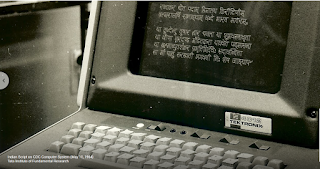1st MADE IN INDIA Computer !!!!, You probably not heard off.
 |
| TIFRAC(Tata Insititute of Fundamental Research Automatic Calculator) |
The name of the computer is TIFRAC (Tata Institute of Fundamental Research Automatic Calculator) made by TIFR(Tata Institute of Fundamental Research) under guidance of Dr. Homi Jahangir Bhabha.
 |
| Dr. Homi.J.Bhabha |
 |
| TIFR (Tata Institite of Fundamental Research),Mumbai |
In 1954, the group called for the design of a full-scale, general-purpose, electronic digital computer...
 |
| Person Working on TIFRAC |
The initial team comprised six people with an M.Sc. in physics, with specialization in electronics.
But none of them had experience using or operating computers - let alone building one!
In 1955, they set out to design a pilot machine. By late 1956, it was operational. The following year, they designed a full-scale version and by 1959 it was complete.
The machine was formally commissioned in February 1960 and later named TIFRAC (TIFR Automatic Calculator) in 1962 when the new TIFR buildings were inaugurated by the then Prime Minister, Jawaharlal Nehru.
 |
| Inauguration by Prime Minister Sh. Jawaharlal Nehru |
This general purpose digital computer designed by the Computer Group of TIFR was the first digital electronic computer to be designed and built in India.
The magnetic core memory of TIFRAC had a capacity of 1024 words, and was later expanded to 2048 words.
 |
| Memory of 2 KB at 1960s. |
TIFRAC was used from 1960 until early 1964.
It was in such high demand that it was operated in two shifts each day, to cope with the computational requirements of the organization.
Operating and maintaining TIFRAC created opportunities to train a group of technical personnel, advancing their computer science skills.
The group acquired expertise in the maintenance of this complex electronic system, and the hundreds of inter-connected parts inside it.
Between 1959 and 1962, some of the scientists who had helped design and build TIFRAC travelled to universities in the USA on visiting appointments.
On their return, TIFR set up a committee to oversee more research into large-scale computing.
 |
| OLPAD |




Post a Comment